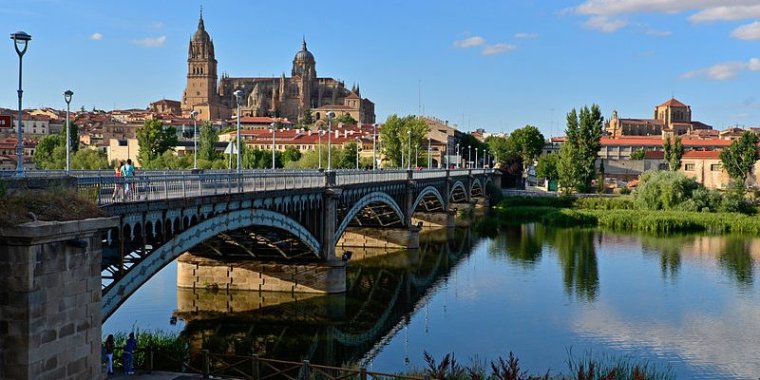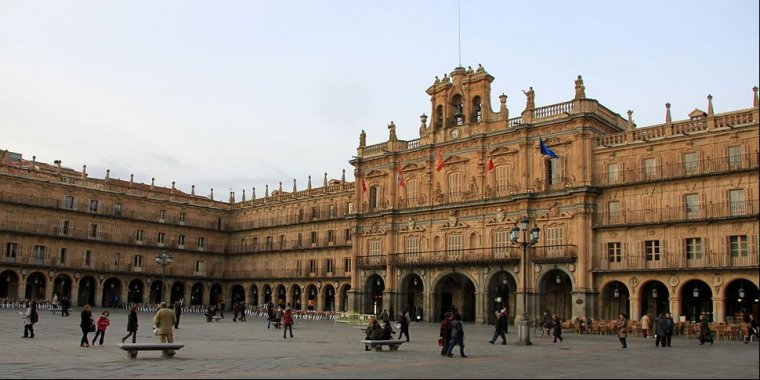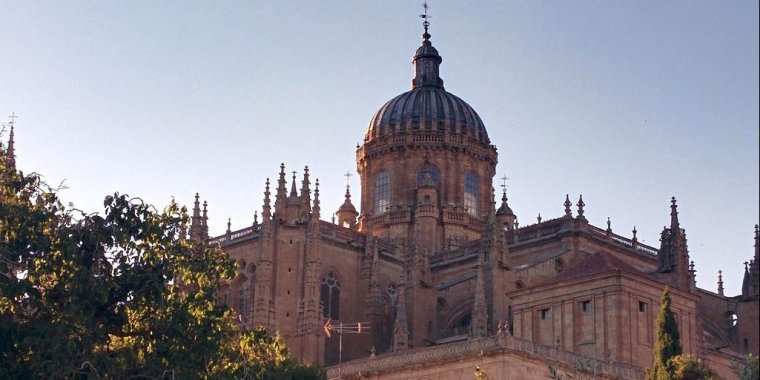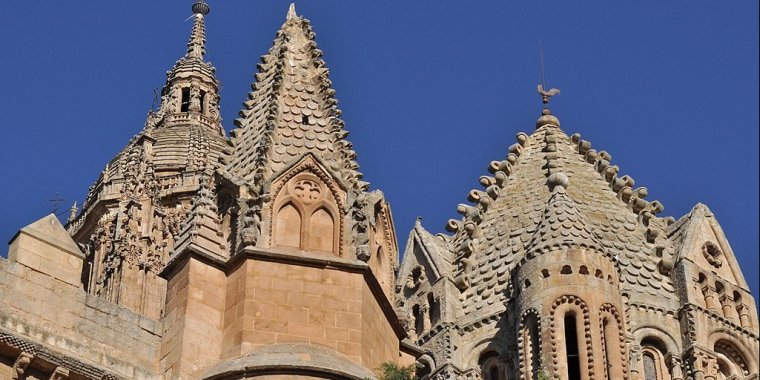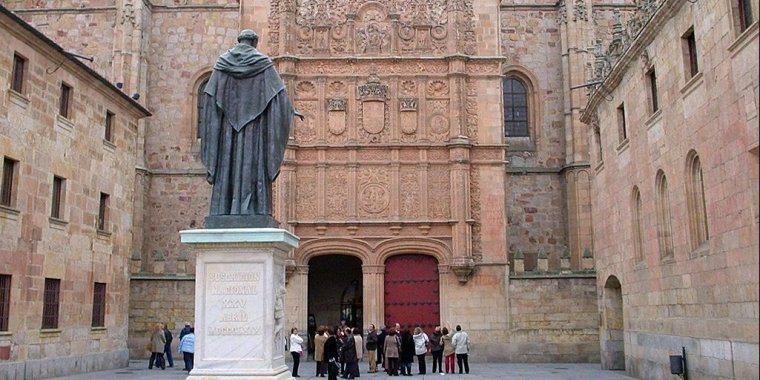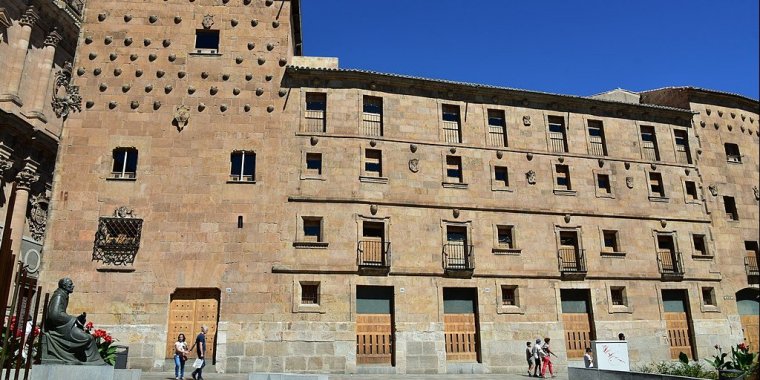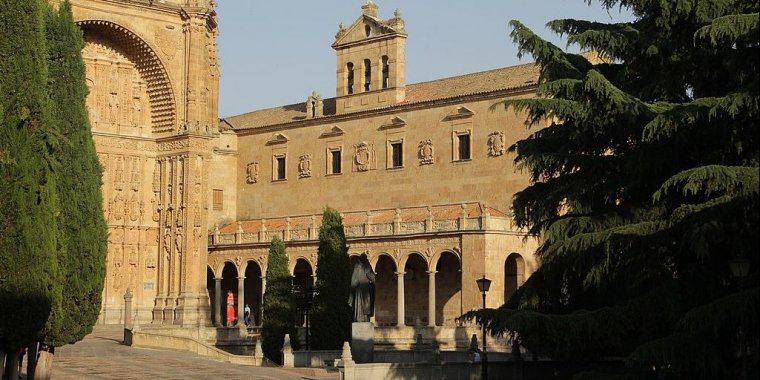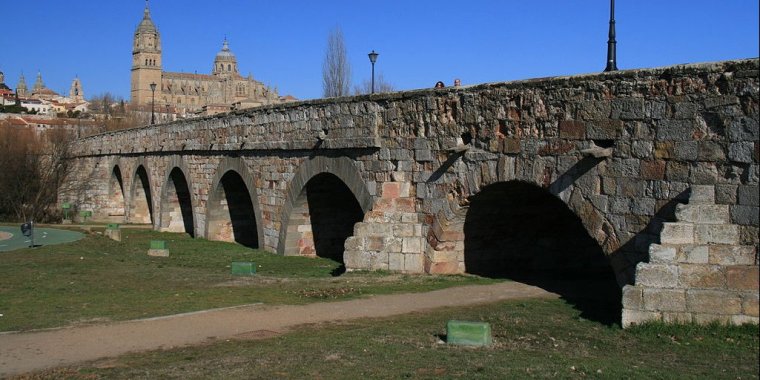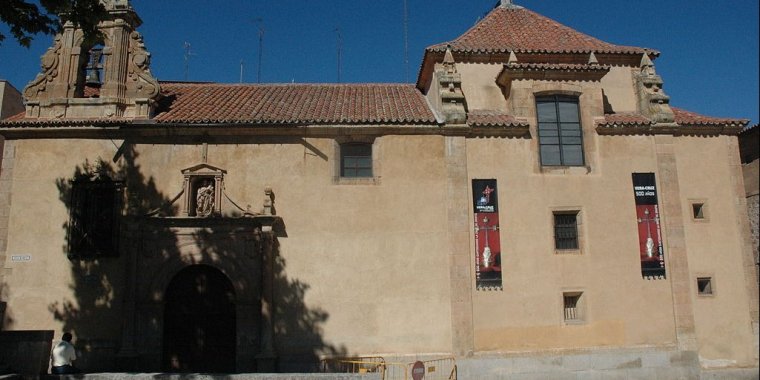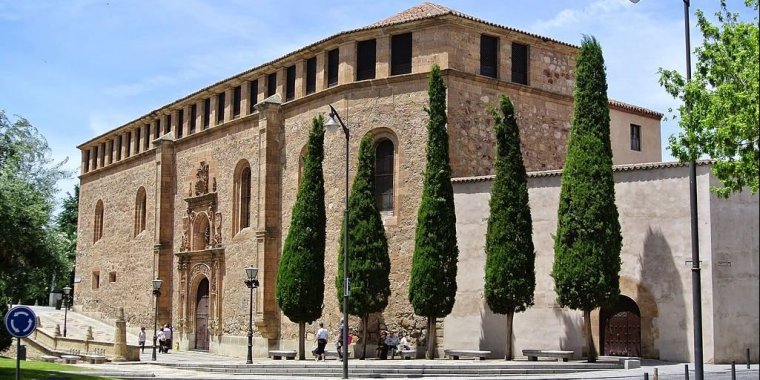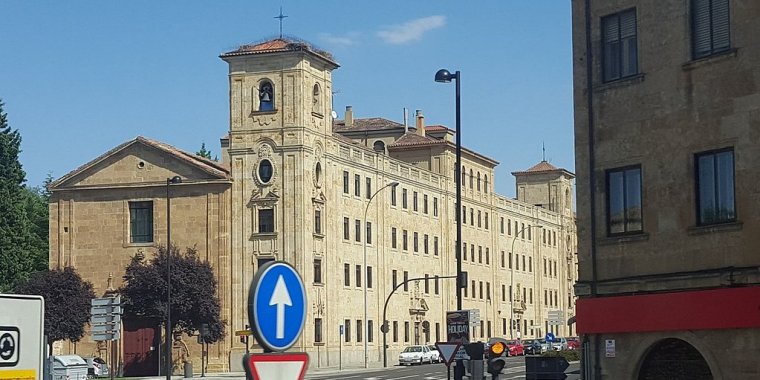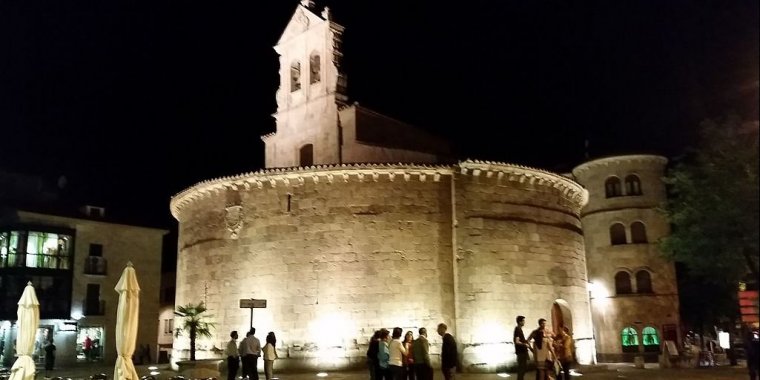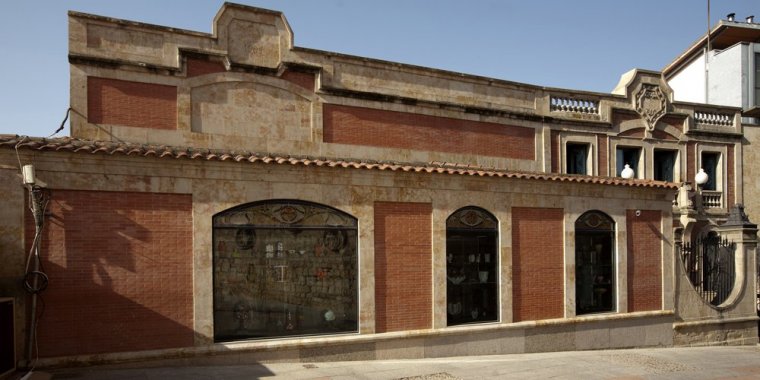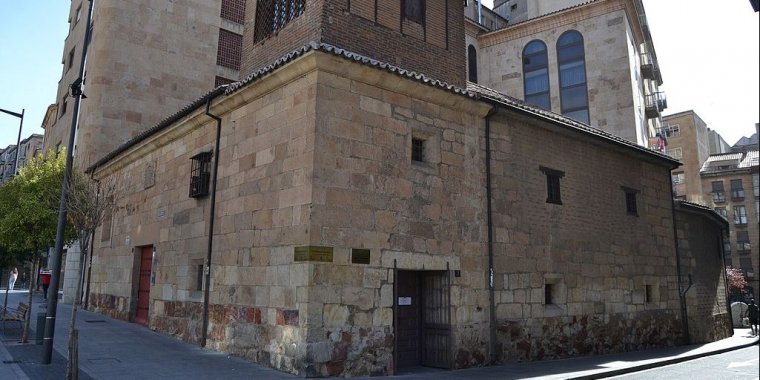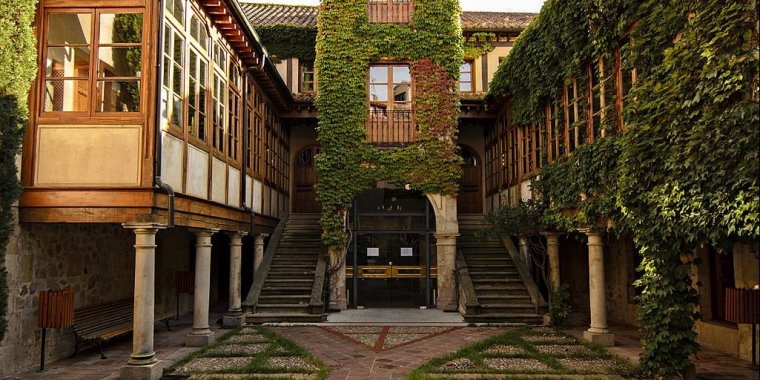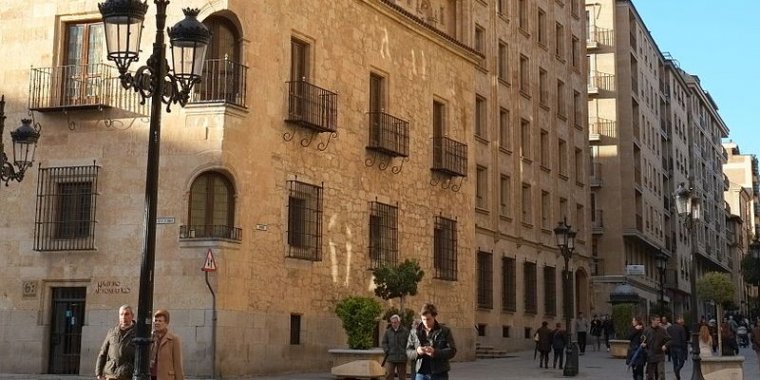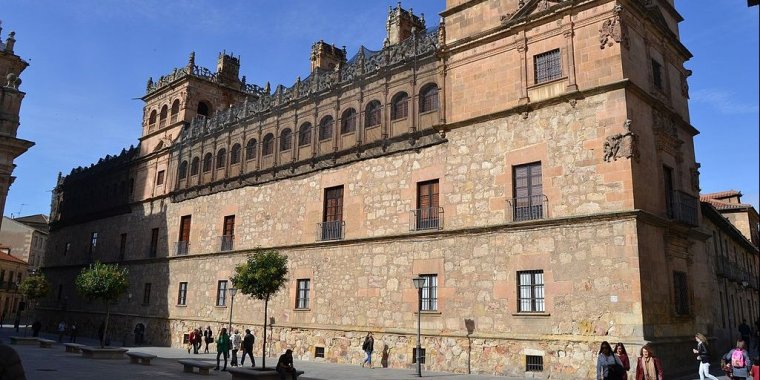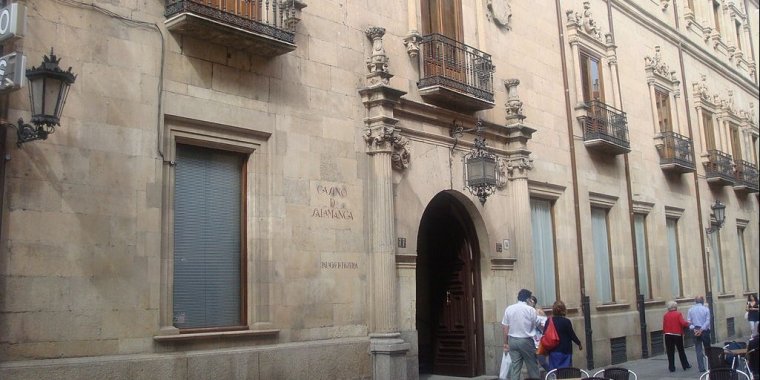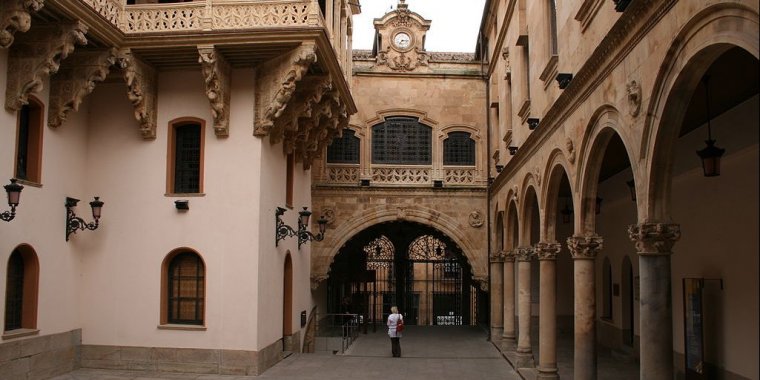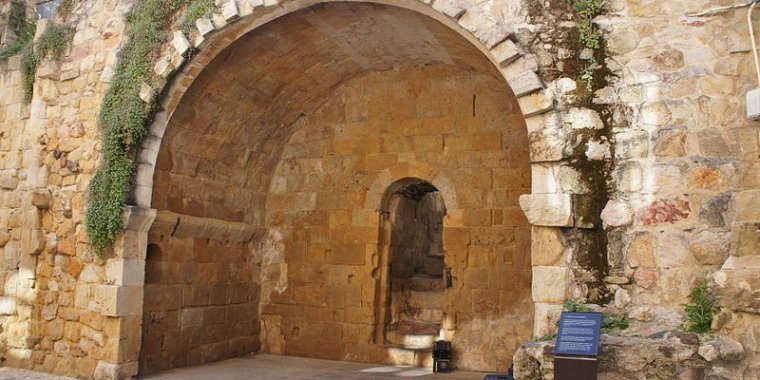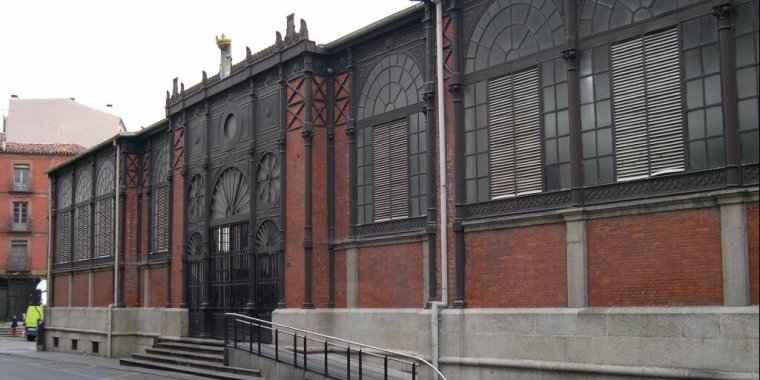| Published in Attractions / Places of Interest |
Tourist Attractions in Salamanca, Spain
The city lies by the Tormes river on a plateau and is considered to be one of the most spectacular Renaissance cities in Europe. The buildings are constructed of sandstone mined from the nearby Villamayor quarry, and, as the sun begins to set, they glow gold, orange and pink. It is this radiant quality of the stones that has given Salamanca the nickname La Dorada, the golden city.
In 1218, Alfonso X of León (Alfonso The Wise) founded the University - one of the first in the world. In 1254, Pope Alexander IV called it "one of the four leading lights of the world".
• Plaza Mayor is a large elegant square, bustling with cafés and restaurants (notably pricier than in the nearby streets). Plaques of monarchs and nobility gaze down upon the square: check in the north-east corner whether Franco is currently in or out of this pantheon. He's often vandalised, but his plaque is designed for speedy cleaning.
• New & Old Cathedrals (Santa Iglesia Catedral) (enter from north side, Plaza del Anaya). Nov-Mar 09:30-19:00, Apr-Oct 09:00-21:30. The two buildings are joined and you enter via the New Cathedral, built 16th-18th C. Outside, note the fine Puerta de Ramos, not entirely Renaissance as among the saints are an astronaut and an imp clutching an ice-cream cone. The interior is a baroque / Churrigeuresque creation, with fine ceilings, choir and main chapel.
An internal door leads down into the Old Cathedral, 12th C and mostly Romanesque, with many frescoes. 6€.
• University (Universidad Civil), Calle de los Libreros. Mon-Sat 09:30-13:00 & 16:00-18:30, Sun 10:00-13:00. The extensive University, constituted in 1254, has departments and campuses across the city but the area to visit is the old core of it close to the Cathedrals. Admire the elaborate facade: kudos comes to those who can spot the frog unaided. Richly appointed rooms within, highlights being the library, the grand staircase, and the Hall of Fray Luis de Leon. Adults 10€, concessions 5€.
University buildings
— University: Set of buildings that made up the former University of Salamanca, including the Escuelas Mayores, the Escuelas Menores and the Hospital de Estudio (current rectorate). These buildings are situated around the square known as Patio de Escuelas. In this same square is the home of Dr. Álvarez Abarca or of the Doctors of the Queen (15th century), whose façade is Gothic with Renaissance details and is now the Museum of Salamanca.
— Casa-museo de Unamuno (18th century): former home of the rectors of the university. It preserved as in its time it had Miguel de Unamuno when he took this position.
— Colegio Mayor de Santiago el Zebedeo, also called "of the Archbishop Fonseca" or "of the Irish" (16th century).
— Colegio de San Ambrosio (1719): Is currently General Archive of the Spanish Civil War. Houses documents and items seized by the national troops and their allies during and at the end of the Spanish Civil War. While over the entire postwar its basic objective was to preserve the information related to organizations and peoples potentially opposing the Franco regime, and therefore use this information for repressive, since the return of democracy this building would become one of the most important archives that existed in Spain to investigate the historical period of the Second Republic.
— Colegio Trilingüe: founded in 1554 to the teaching of Latin, Greek and Hebrew. It also preserves part of the original courtyard, remade in 1829, in the Faculty of Physics.
— Palacio de Anaya was the last headquarters of the Colegio Mayor de San Bartolomé or Colegio de Anaya founded in the 15th century by Don Diego de Anaya, abolished in the early 19th century. Today is the faculty of philology. Next to the building is the Iglesia of San Sebastian, former chapel of the college and the Inn, work by Joaquín de Churriguera.
— Colegio Santa Cruz de Cañizares (16th century): Music Conservatory. Of it only remains the old chapel, now incorporated into the assembly hall of the conservatory, and the main façade, of plateresque style.
— Colegio de San Pelayo: founded in the mid-16th century. Since 1990 home to the Faculty of Geography and History.
• The House of Shells (La Casa de las Conchas) was built 1493-1517 by a University professor who was also a Knight of the Order of Santiago de Compostela. The facade is studded with 350 sandstone shells, symbol of Santiago (St James) and the pilgrimage. Inside is now a public library.
• Convento de San Esteban - Dominican monastery with striking facade, and impressive church interior, with good exhibition on of missionaries in the New World. It's off the tourist beat so you may well have it to yourself.
• At the southern foot of town, the Roman bridge spans the River Tormes. Dating from 89 AD, this bridge was an important part of the Roman silver route, which ran from Mérida to Astorga. From here you also see what's left of the city walls, on the bluff overlooking the river.
• Campo de San Francisco (Salamanca): First public garden in the city on grounds of the former convent of San Francisco Real.
• Huerto de Calisto y Melibea (Salamanca): Garden near the cathedrals where, some say, lies the plot of the novel La Celestina by Fernando de Rojas. Beside it are remains of the Roman Walls.
• Plaza del Corrillo (Salamanca): Small square adjacent to the Plaza Mayor. On the left is the Romanesque church of San Martín and the right a series of houses with porches formed by columns of stone completed in pads representing the days of the week (a moon for the Monday, a Mars for Tuesday, etc.).
• Capilla de la Vera Cruz: Baroque church with Renaissance façade, headquarters of the five-hundred-year-old Brotherhood of the Vera Cruz of Salamanca. It houses countless works of art.
• La Clerecía: currently houses the Pontifical University. Building started in 1617 and was completed 150 years later as the Colegio Real del Espíritu Santo, of the Society of Jesus. The style is Baroque. It difference the school, with an interesting cloister and the church, with an impressive façade of three bodies, two twin towers of 50 meters high and a huge dome. The Clerecía name is because it belonged to the Real Clerecía de San Marcos after the expulsion of the Jesuits.
• Colegio de Calatrava: Built in the 18th century, by the initiative of the Order of Calatrava, now houses the Casa de la Iglesia.
• Convento de las Agustinas e Iglesia de la Purísima: In the church is a painting of the Immaculate Conception painted by Jusepe de Ribera. It is the only construction of totally Italian space and decor in Spain.
• Convento de las Dueñas (15th century): Highlights the irregular Renaissance cloister.
• Convento de las Isabeles (Salamanca)
• Convento de San Antonio el Real (1736): of Baroque style, its remains were divided between the Lyceum Theatre and a store where it can visit.
• Convento de la Anunciación (Calle de las Úrsulas): Founded by the Archbishop Alonso II de Fonseca in 1512. Stresses the exterior apse of Gothic style. In the inside, the Baroque altarpiece and the tomb of the founder, Renaissance, work by Beto.
• Convento de la Trinidad: Former Palacio de Montellano adapted in the 16th century to host a Trinitarian friary.
• Monasterio de Nuestra Señora de la Victoria, of the monks of the Order of St Jerome, completed in 1513, almost destroyed by the French in the early 19th century, the Peninsular War, is now integrated into the manufacturing facilities of the 19th century, of the Grupo Mirat.
• Ermita de Nuestra Señora de la Misericordia (16th-17th centuries): small Baroque chapel which was begun in 1389 in the Plaza de San Cristobal. Currently very damaged, is a printing, while its bell-gable decorates the church of the Pizarrales neighborhood.
• Antigua Iglesia de las Bernardas work by Rodrigo Gil de Hontañón. Prototype of the Salamancan churches of the 16th century. Stresses the shell-shaped head. Today it is within the Colegio de San José de Calasanz.
• Iglesia del Carmen de Abajo: Chapel of the Third Order Carmelites, incorporated in the Friary of San Andrés. It is the only remnant of that friary, which disappeared in the 19th century.
• Iglesia de San Benito: Gothic church built under the patronage of Alonso II de Fonseca, pantheon of the Maldonado family.
• Iglesia de San Julián: Romanesque church subsequently restored.
• Iglesia de San Marcos: Romanesque church near the path which ran the North walls of the city. Outside circular plant has three naves and apses inside.
• Iglesia de San Martín: Romanesque church with Gothic reforms, Renaissance and Baroque, attached to the Plaza Mayor.
• Iglesia de San Pablo: Baroque church belonging to the former convent of the Trinitarians, houses the image of Jesus Rescued, much venerated in the city. Parish hosts, governed by the Diocesan Laborer Priests.
• Iglesia de Santo Tomás Cantuariense: Romanesque church founded in honor of St Thomas, Archbishop of Canterbury in 1175, just five years after his death and two after his canonization. It has three apses and a nave with a wooden roof. Form Parish along with St Paul, governed by the Diocesan Laborer Priests.
• Casa de Don Diego Maldonado: 16th-century Plateresque palace. It houses the Hispanic-Brazilian Cultural Foundation and the Centre for Brazilian Studies at the University of Salamanca.
• Casa de Doña María la Brava: 15th-century Gothic building, prototype of the noble mansions of the time. Its owner, María Rodríguez de Monroy was the head of one of the two sides in that split the city in the 15th century. Beheaded the murderers of her children. It is located in the Plaza de los Bandos.
• Casa Lis: Art Nouveau palace of 1905 with iron façade. Built on the walls. It houses the Collections of Art Nouveau and Art Deco donated by Manuel Ramos Andrade.
• Casa de las Muertes (early 16th century), built by Juan de Álava and named such for the skulls that decorate the façade.
• Casa del Regidor Ovalle (18th century): The Spanish writer Miguel de Unamuno died here.
• Casa de Santa Teresa (16th century): The saint Teresa of Ávila stayed here when she visited Salamanca in 1570 to found a convent and here she wrote the poem Vivo sin vivir en mí.
• Casa de la Tierra (15th century): doorway with arched, Gothic window tracery. Headquarters of the Chamber of Commerce and Industry of Salamanca.
• Casa de las Viejas (17th century): old workhouse for poor, now the headquarters of the Regional Film Archive of Castile and León. Permanent exhibition of equipment related to cinema and its history, owned by Salamancan filmmaker Basilio Martín Patino.
• Fonda Veracruz: courtyard with wooden galleries in form of dead-end street. Currently catering school.
• Arias Corvelle Palace (15th century): sgraffito façade very similar to that of San Boal. It houses the School of Fine and Performing Arts of San Eloy.
• Castellanos Palace (15th-16th centuries): The Palace of the Marquises of Castellanos construction began in the late 15th century, although the façade dates from the late 19th century which combines Gothic and Neoclassical styles. With a powerful Gothic interior courtyard, this building now serves as a hotel.
• Garci Grande Palace (16th century): Renaissance doorway and chamfered corner windows unique in the city. Head Office of the Savings Bank (Caja Duero).
• Monterrey Palace: was built in the 16th century and is of plateresque style. Belongs to the House of Alba and highlight its towers and chimneys. Only it built one of the four parts that composed all designed initially.
• Orellana Palace (16th century): building of classical architecture with Mannerist influence. The courtyard in L shape and the ladder.
• Rodríguez de Figueroa Palace (1545): has interesting façades at the streets Concejo and Zamora and interior courtyard. Today the Salamanca Casino.
• La Salina Palace (1546): Renaissance, work by Rodrigo Gil de Hontañón. Since 1884 is the headquarters of the Provincial Diputation.
• San Boal Palace (15th century): façade decorated with sgraffitos. Was School of Commerce and later Faculty of Business. Since 1999 is Hispanic-Japanese Cultural Center of the University of Salamanca. In the same square is the Iglesia de San Boal (17th century).
• Solís Palace (15th century): In this palace were married Philip II of Spain and Maria Manuela of Portugal in 1543. Today it houses the Telefónica.
• Tower del Aire: is all that remains of the Palace of the dukes of Fermoselle, built in the 15th century. It has beautiful Gothic windows. It is currently a student residence.
• Tower del Clavero (15th century): remains of a palace, apparently built by Francisco de Sotomayor, Clavero Staff of the Order of Alcántara, about 1470 . The lower part is quadrangular, while the upper is octagonal adorned with eight cylindrical turrets.
• Torreón de los Anaya (15th century): old manor house of Gothic civil style which highlights the mullioned window and the Patio de Tres Lados. For years it was the seat of Institute of Studies of Latin America and Portugal of the University of Salamanca, also known as Palacio de Abrantes.
• Museum of the History of the City
• Museum of Trade of Salamanca
• Museum of Automotive History of Salamanca
• University Museum - University Library
• University Collections
• Bullfighting Museum
• Collections of the Convento de las Úrsulas
• Museum of the Convento de Santa Clara
• Teresian Museum
• Casa Museo de Zacarías González. House where Zacarías González lived and painted, on the street Alarcón.
• Permanent Exhibition IERONIMUS. The name of the exhibition: IERONIMUS alludes to Don Jerónimo de Périgueux, famed French-born Spanish bishop by the Diocese of Salamanca in 1102, who commissioned the construction of the Iglesia de Santa María. This was the event that marked the origin of the 900 Years of Art and History of the Cathedrals of Salamanca. In this tour one can admire amazing places like the one offered by the gazebo next to the Tower del Gallo, the Patio Chico or the Terraza de Anaya. The circuit of the exhibition begins in the Board of Warden, continuing on the Board of the Tower Mocha, the Platform of the Superior Room and the Board of Vault.
• Cave of Salamanca. Located on the Carvajal slope, where it is said that the devil taught black magic.
• Central Market (1899–1909). Located in the old Plaza de la Verdura. Made of iron.
• Nearby are the Mudéjar Romanesque church of Santiago (modern reconstruction) and the stone bull quoted in Lazarillo de Tormes.
See also Salamanca in Pictures.
YOU MAY ALSO LIKE





 If you own or manage a travel-related business such as a hotel, a bed-and-breakfast, a restaurant, a pub or a cafeteria, you can create a web page for your business for free on Titi Tudorancea Travel Info. » |
